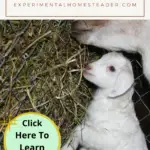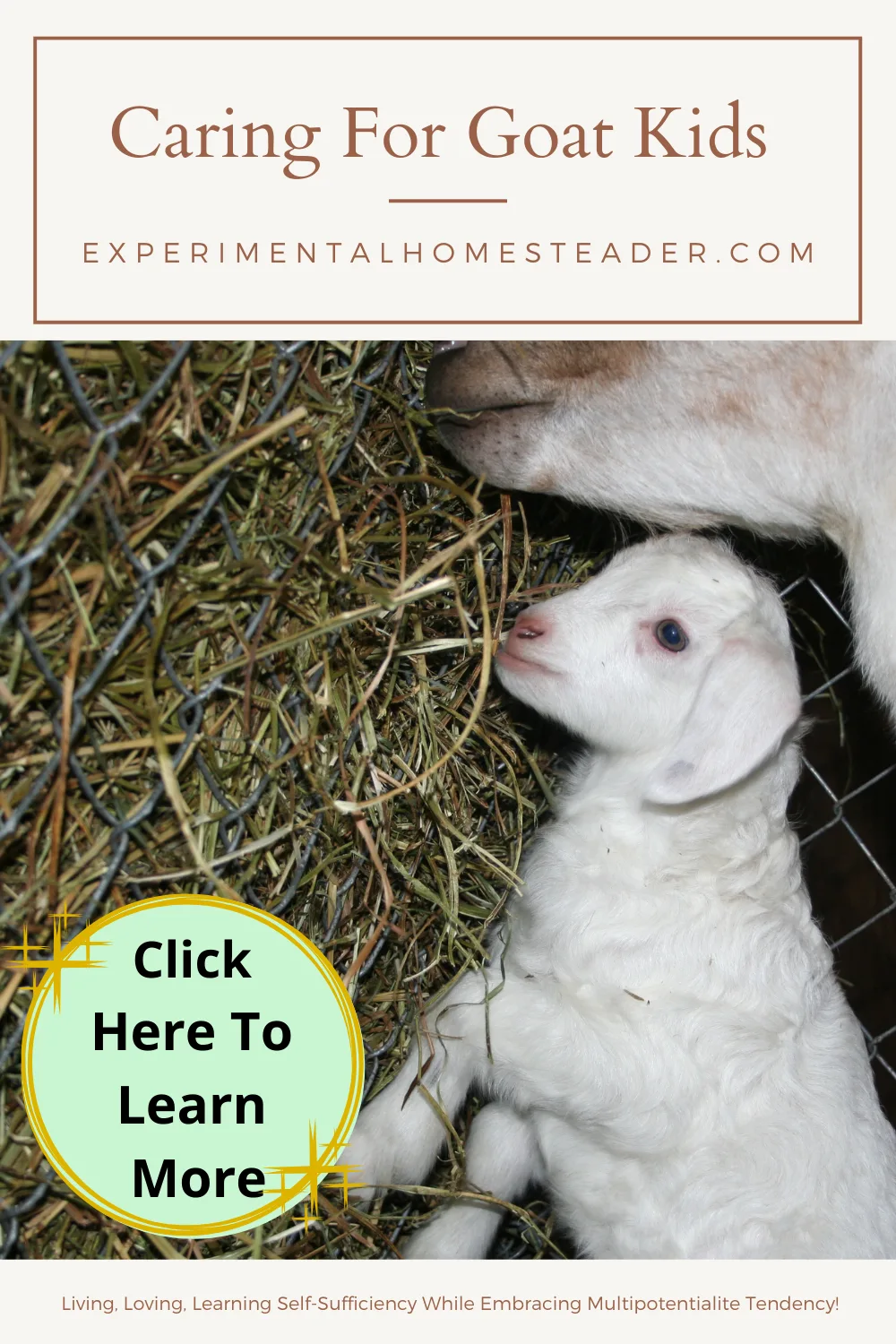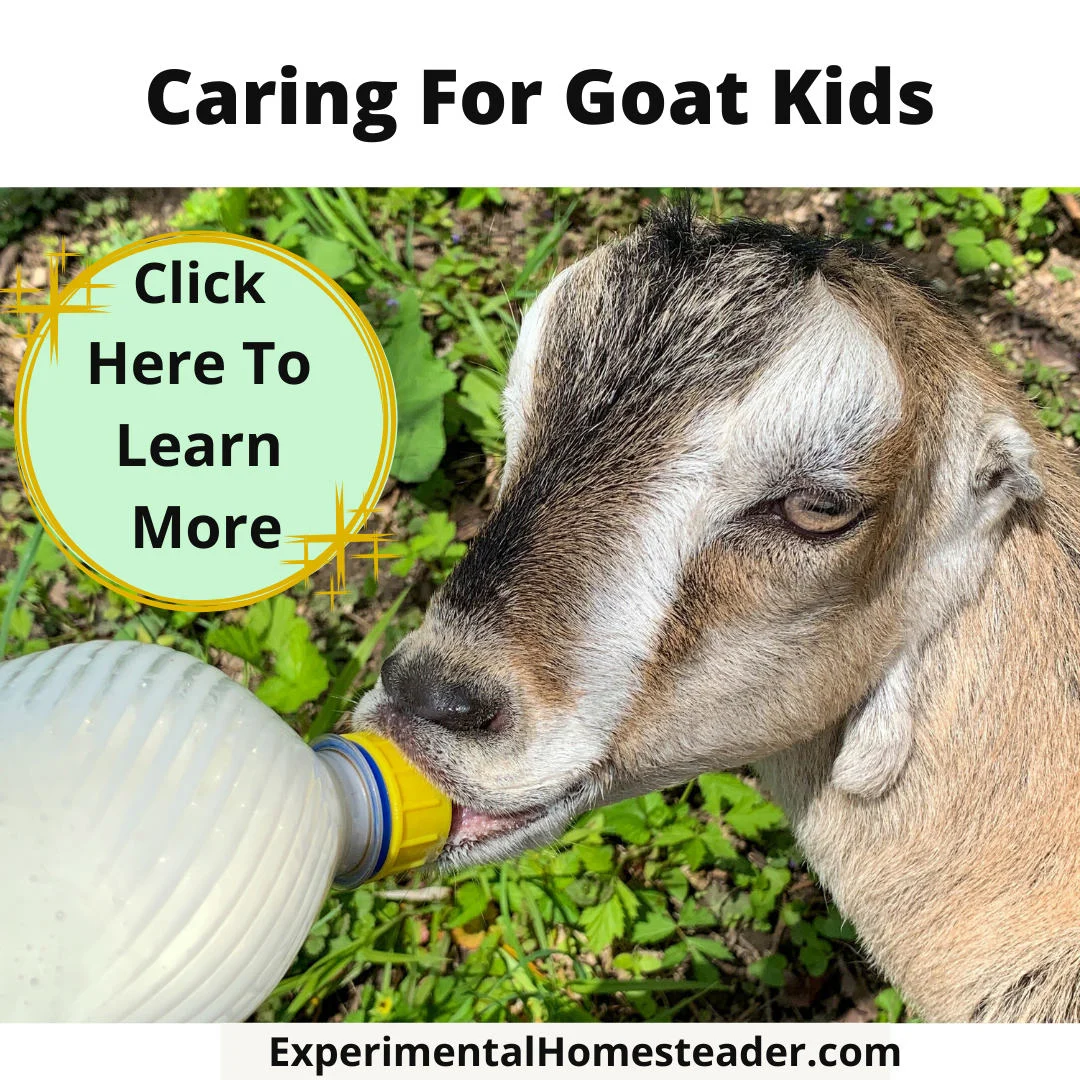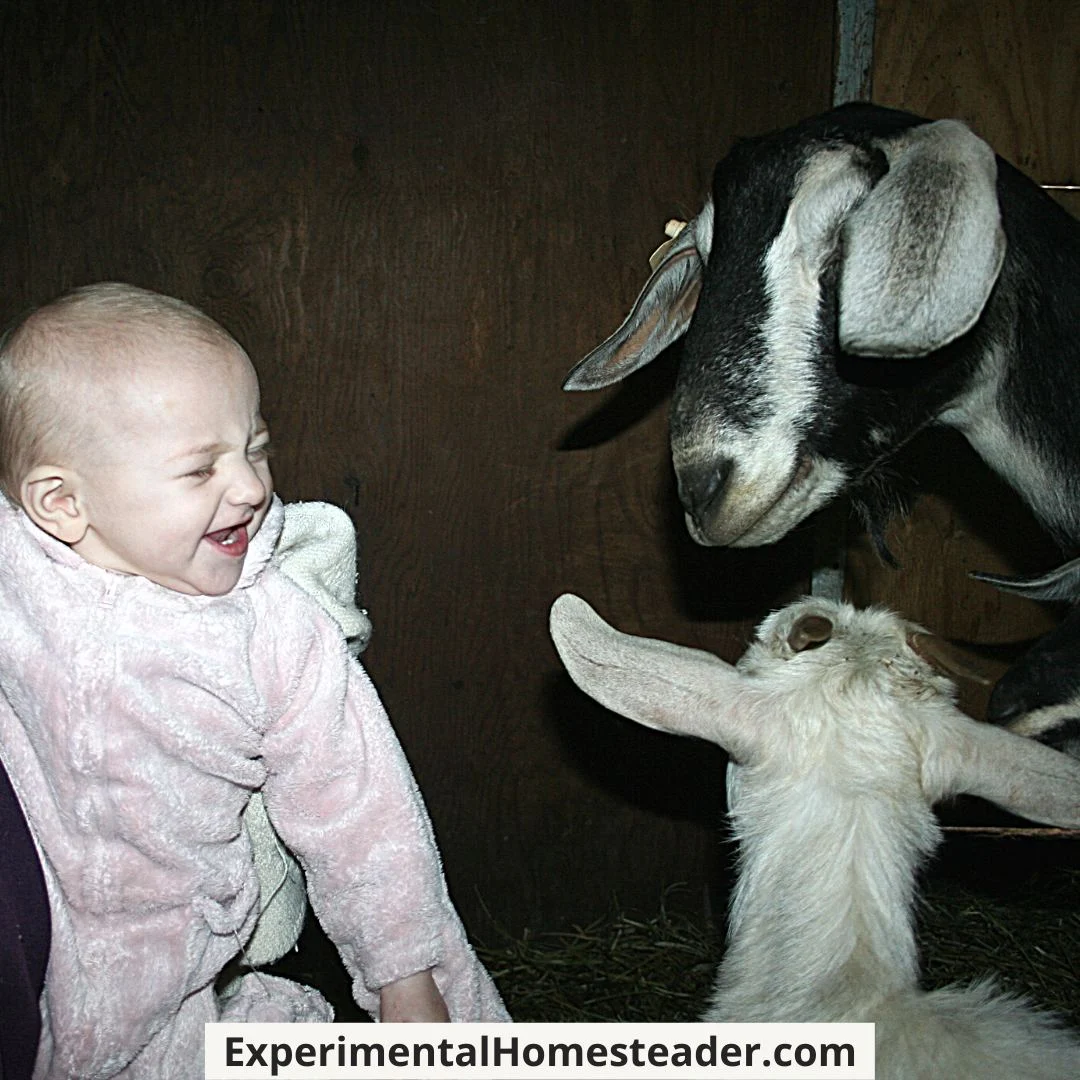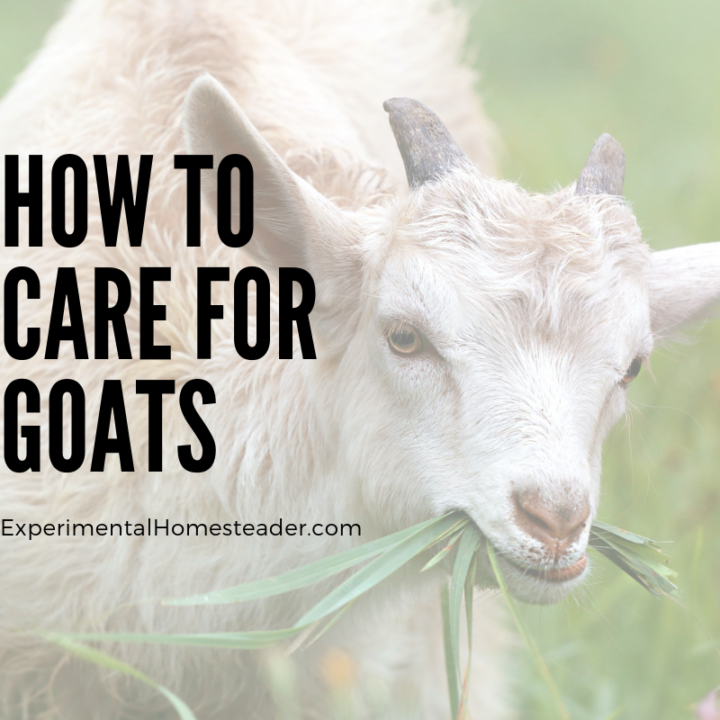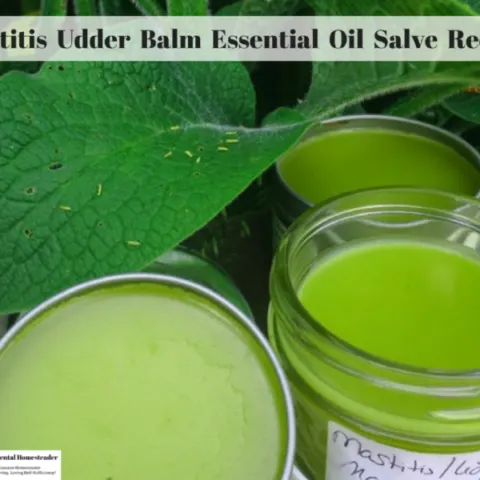I remember bringing home our first goat Darla.
She had just kidded however the babies were going to a different home.
When we made the decision we just wanted a goat in milk – and had a lot to learn – so we felt taking a pregnant goat might spell disaster.
In hindsight – which is always 20/20 – if I were to make the decision all over again, I would choose a pregnant goat and let her kid here.
Moving A Goat Does Stress Them
Now it is true that goats stress when they are being moved – and this can lead to problems – however after everything I have learned I believe it was more stressful for her to kid for the first time, have her kids taken away immediately and then move on to a new home by herself.
Goats Are Herd Animals
We had no goats here at the time and chose not to take a second goat.
That was a mistake and let me tell you I remedied that real quick!
Goats are not happy alone.
She cried day and night until I figured out she needed a companion.
By the time I was done, we had 7 goats – 5 does, 1 wether and 1 buck.
Let Mama Raise Her Kids
Come spring we had goat kids – and we learned real fast that there are only a few things goat kids need – and one of them is their mama.
Now I know some people are going to disagree with me, but here is how we handled our kids – and in the end all worked out quite well.
First let me say, we did not show our goats.
They were here as pets and to provide milk for drinking, making butter, cheese, other dairy products, lotion and soap.
Two of my goats were fiber goats so I did not milk them, but instead sheared them for fiber.
I let all my goats raise their own kids however I was in the barn for the birthing just in case something was to go wrong – and it can – but thankfully we only had to help one goat kid – and she was older.
It was her second to last birth.
We lost that little goat kid, but by then I learned sometimes things are out of your control.
Be There When The Goats Give Birth
I always stayed in my barn for a while after each goat birthed.
I let the mama goat clean her kids up only intervening if it was really cold – and then it was only to drape the baby with a towel that would help absorb some of the moisture.
Now my barn is warm – not heated – but warm enough that most of the time their water did not freeze except on the very surface. A
quick hit with a hoof broke that ice right up. I kept my barn closed up during the winter only letting the goats out on warm days.
This was to keep drafts off them as I was told a draft will kill a goat a lot quicker than the cold.
Once the goat was clean and dry I made sure the goat kids were nursing.
Thankfully I only had one goat that refused her baby and I was able to move that baby onto another goat who had kidded.
Sometimes You Do Have To Bottle Feed
I did have to milk her by hand for the first few days and try to bottle feed the kid so it would get the colostrum from the mother.
I tried everything to make this goat accept her kids but she rejected them both times I let her have kids.
After that I decided she was not being bred anymore.
The funny thing was her mother was a great mother who let her kids nurse until she went dry.
I even kept powdered colostrum on hand but I have never had a need for it in the 9 or 10 years I have had goats.
However my thoughts was better safe than sorry.
I kept it refrigerated so it did not go bad.
The first week or so I went out every 4 hours day and night to make sure the goat kids were nursing.
We do have a goat cam set up in the barn but I still went out.
Interact With The Goat Kids
I spent time sitting in the stall with mama and kid – who were separated from the rest of the herd – watching the goat kids drink, talking to the mama and petting the kids.
Goat kids are very curious and seek attention from anyone in their immediate area.
Keep The Stall Clean
I also spent some of this time cleaning up the stall and removing any visible goat berries.
Now you might laugh but I keep two kitty litter scoops in my barn for this very purpose.
I put the goat berries or any wet bedding into a bucket that can then be dumped on top of the compost pile.
This keeps my stall clean and dry.
It also lets me monitor the goat berries.
Now they do change right after birthing and turn into larger clumps, but it does not take long for them to go back to normal.
Let Mama Goat Eat Her Placenta
I also allow the mamas to eat their placenta.
This seems natural and no harm ever came out of this practice.
Any that is left after an hour or so is removed.
It is also normal for some bloody goo to come out of the mamas rear end for a day or so after birthing.
This is nothing to be alarmed about.
Keep An Eye On Those Goat Kids Butts
When it comes to the goat kids, keep an eye on their bottoms.
I always bought baby wipes and kept them in the house so they stayed warm but made a point to take them to the barn with me overtimes I went.
The mamas sometimes cannot get the stuck on goat berries off the kids bottoms.
Baby wipes come in quite handy for that and you can toss them when you are done.
Sometimes you still might need a really warm rag to soften the mess but most of the time the baby wipes work just fine.
Be prepared for the goat kid to try to escape during this time and for the mama to holler a little but I’ve never had a mama goat attack me.
Sometimes Things Go Wrong And You Have To Intervene
Another lesson learned is if your goat kids cannot stand up, but are eating and drinking ok you can buy a powered mineral with extra selenium as well as a liquid drench for the baby.
We chose a product called Power Punch for the baby.
Massage the goat kids legs every time you go outside to help them eat.
It does not take long before they are standing on their own. Luckily I only had one goat like this – the last one that one of my does had.
I gave him to a friend once he was doing well and she has had no issues with him or his offspring.
It was a simple mineral deficiency that was easily fixed.
Keep Mama And The Kids Separate From The Herd
Overall the lessons learned was separate the mama from the herd right before she births or separate her and the kids as soon as she births.
Put them in their own stall together so they can bond.
Let the goat kids drink from mama’s teats.
Just be there in the beginning to make sure there are no issues.
I have even checked teats to make sure the milk is coming out ok.
Eventually You Do Have To Separate Them
Let the goat kids have all the milk they want from mama for at least the first six weeks, then you can start separating the goat kids at night so you can milk her in the mornings – but do not milk her all the way down.
Let the mama and kids run together during the day, but separate them about 5 or 6 in the evening.
Be sure the goat kids are eating hay, grain and drinking water on their own before you separate them which is why I generally what about six weeks.
I know they do this sooner but I prefer to wait than chance losing a kid.
Keep them warm, dry and make sure they are in a draft-free area.
Know your goats, know their needs because more than likely you are going to be able to help your goats far better than a veteraniarian.
I have never used heat lamps or heat blankets designed for pets even though I do have them just in case.
Be sure to spend some time interacting and playing with the goat kids – and let them interact with one another too.
Goats learn fast.
Don’t believe you have to bottle feed to have a friendly goat.
That is simply not true – and if you have questions or tips, please feel free to share those in the comments below.
We can all learn from one another.
Raising Goats
Goat Hoof Trimming Guide
Goat hoof trimming is not as hard as it may sound and it necessary to learn how to do this if you are raising goats. This goat hoof trimming guide gives you all the information you need to get started trimming your goats hooves on your own.
Goat Homemade Teat Dip Recipe
This homemade teat dip for goats is easy to make. This particular teat dip solution contains essential oils and simple ingredients plus it does the job!
Mastitis Udder Balm Essential Oil Salve Recipe
It is essential to take care of your goats teats. I wanted something natural so I came up with this homemade balm essential oil salve recipe using comfrey.

